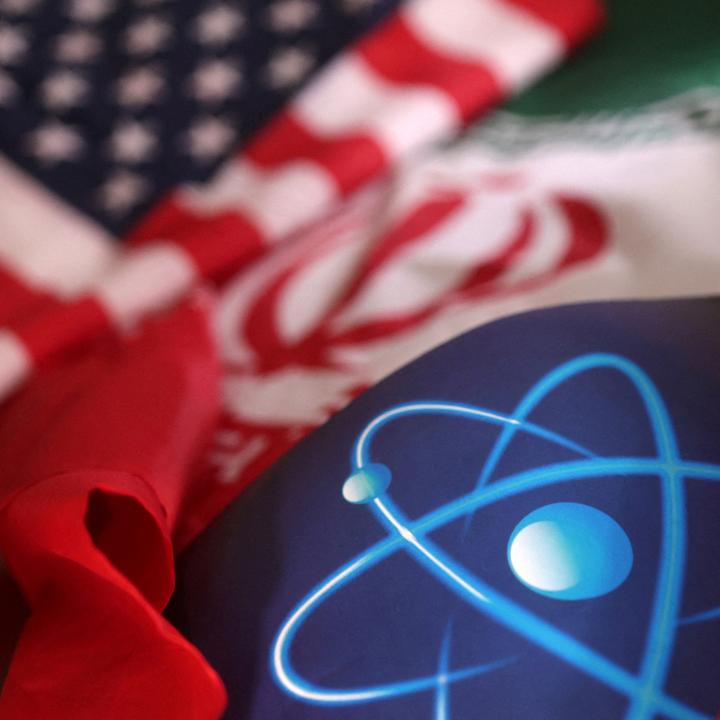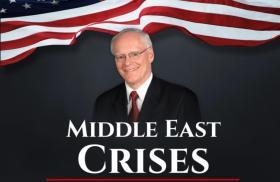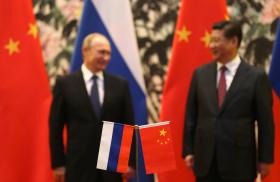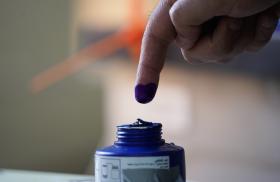
- Policy Analysis
- PolicyWatch 4067
Iran Talks Are Still Necessary—Here’s What They Should Focus On

From insisting on zero enrichment to making the ceasefire conditional, officials should ensure that any post-conflict negotiations with Tehran fully address U.S. policy imperatives, including the need to prevent reconstitution of the nuclear program.
In the wake of the U.S. and Israeli strikes on Iran, negotiators should aim to reestablish nuclear inspections and explore whether Tehran is prepared for a strategic shift. But any agreement must prevent Iran from rebuilding its nuclear program, not offer cover for it to do so.
How Will the Military Outcome Shape New Talks?
When the United States joined the Israeli military campaign against Iran, it conducted strikes against at least three major nuclear sites: Natanz, the primary enrichment site, with facilities above and below ground; Fordow, a deeply buried facility producing high-enriched uranium; and Isfahan, a sprawling complex with facilities dedicated to uranium conversion, uranium metal production, and the storage of enriched uranium, among other activities. Previously, the Israel Defense Forces had struck several facilities, including the Arak heavy water reactor, centrifuge manufacturing sites, and several sites associated with Iran’s undeclared nuclear program that were likely involved in weaponization research.
The combined U.S.-Israeli military campaign was an unusual one that produced a highly uncertain outcome. The extent to which Washington and Jerusalem coordinated their actions, despite twenty-plus years of discussions about the possibility, is unclear. Nor is it clear whether the United States entered the fight due to a lack of confidence in Israel’s ability to eliminate targets like Fordow, or because it perceived other advantages of becoming involved.
After the American strikes, details were leaked about an initial low-confidence assessment by the U.S. Defense Intelligence Agency suggesting that damage to Fordow was limited. President Trump quickly denounced these reports and insisted that the targeted sites were completely destroyed. As a result of this unusual intervention in a matter normally left to intelligence professionals, any battle damage assessments being touted by the United States must be viewed skeptically.
More problematically, the Trump administration imposed a ceasefire on itself and Israel before the results of the strikes were clear, while targets apparently remained unstruck, and without obtaining any commitments from Iran. Ordinarily, both allies would have sought to locate and opportunistically destroy targets missed or left intact in the initial attacks, but this option was foreclosed by the premature, unilaterally imposed ceasefire.
Despite these issues, the combined strikes appear to have set back Iran’s nuclear breakout time by at least months. Media accounts have implied that this is a disappointing result, but it is not insignificant. Prior to the strikes, Iran’s breakout time was measured in days, meaning it could have produced and perhaps hidden weapons-grade enriched uranium before the United States or Israel could detect its manufacture, much less act to prevent it. The strikes themselves are evidence of the risk and instability to which this gave rise. Although a breakout timeline of several months is certainly not the optimal or hoped-for outcome of the strikes, it at least provides breathing room for talks. Washington can now negotiate with more confidence in its ability to detect and stop a clandestine Iranian sprint for a nuclear weapon, while Tehran has full knowledge of America and Israel’s willingness to use military force.
The Diplomatic Imperative
The uncertainty surrounding the outcome of the abortive military campaign makes postwar diplomacy all the more important. President Trump has variously asserted that the United States would like to engage in diplomacy and that a diplomatic agreement is unnecessary due to the purported destruction of Iran’s nuclear program. Yet many conflicts—even ones with a clear victor—end with diplomatic agreements. In this case, three factors make diplomacy essential:
- The extent to which Iran’s nuclear capabilities have been set back is unclear, and some elements almost certainly survived. For example, Vice President JD Vance has indicated that the United States did not destroy Iran’s stockpile of high-enriched uranium.
- Even if these residual elements of the nuclear program do not leave Iran in a position to break out quickly, they could be exfiltrated and provided to other states or even terrorist groups.
- Even if the nuclear program is totally destroyed, Iran may seek to reconstitute it, even if only a symbolic portion. Western officials would see this as irrational, but Tehran may regard the effort and expense as a politically justified sign of defiance or resilience in the face of U.S.-Israeli coercion.
For its part, the United States would presumably be guided by the following imperatives in any diplomatic effort:
- Establish the precise state of Iran’s postwar nuclear capabilities.
- Impose constraints on any possible reconstitution of damaged or destroyed capabilities.
- Test Iran’s willingness to make a strategic shift by abandoning other problematic policies, such as support for terrorism and proliferation of missiles, drones, and other advanced conventional weapons.
To fulfill these imperatives, U.S. negotiators should:
Stick to zero enrichment. The Trump administration has correctly realized that uranium enrichment is best thought of as a binary issue rather than a sliding scale. That is, if Iran is permitted any enrichment whatsoever—even low levels such as the 3.67 percent allowed under the 2015 nuclear agreement—it will have a pretext to rebuild its entire nuclear infrastructure. To prevent the next agreement from serving as cover for revived nuclear weapons aspirations, negotiators must ensure that no enrichment is allowed on Iranian soil.
Cooperate with allies. Prior to the strikes, little meaningful coordination took place between the United States and its key historical partners in nuclear diplomacy, the E3 grouping of France, Germany, and the United Kingdom. Washington should aim to reinvigorate such cooperation, in part because the E3 can offer two valuable negotiating advantages. First, the E3 retains the ability to “snap back” UN sanctions prior to the expiration of that mechanism in October. Second, it has extensive institutional knowledge of the Iran nuclear negotiations and Iranian negotiating behavior, which can greatly benefit the U.S. team.
Make the ceasefire conditional. The U.S.-imposed ceasefire is an informal one with no specified terms. It is not clear, for example, whether nonmilitary attacks such as cyberattacks would constitute a violation; the same goes for Iranian efforts to move, hide, or rebuild elements of its nuclear program. U.S. officials should formally state or otherwise make clear that any kind of Iranian attack—including cyber operations or strikes by militia proxies in Iraq, Yemen, or other jurisdictions—will constitute a violation of the ceasefire. They should also emphasize that the ceasefire hinges on Iran negotiating in good faith and not seeking to move, hide, or reconstitute any elements of its nuclear program while talks are ongoing.
No premature sanctions concessions. While the U.S. and Israeli strikes lent powerful credibility to the use of military threats as negotiating leverage, Iran will also continue to pursue the lifting of sanctions and seek to avoid the snapback of UN sanctions in the fall. President Trump has already indicated that he will not enforce certain major sanctions—for example, those obstructing Iranian oil sales to China, which have continued unabated throughout 2025. Rather than making such unilateral, up-front concessions, however, Washington should preserve U.S. and European sanctions leverage in order to ensure a more favorable deal.
Seek a strategic shift. Prior to the strikes, Iran’s national security strategy relied heavily on deterrence. Regime officials hoped that by working through proxies, they could avoid direct retaliation against Iran itself. They assembled a vast missile arsenal and nascent nuclear weapons program in hopes that adversaries would deem the costs of war to exceed any benefits. Tehran also warned of other consequences that would befall any attackers or those perceived as helping them, such as disruption of the Strait of Hormuz. Now that those elements of deterrence have failed or been severely weakened, Tehran’s entire national security strategy is in tatters, with its inability to match its adversaries’ conventional military power now fully demonstrated. This moment of strategic crisis gives Washington an opening to seek a strategic shift along the lines of the one undertaken by Libya in the early 2000s, when Tripoli abandoned not only its nuclear program but also its support for terrorism and threats against fellow regional governments such as Saudi Arabia’s.
Work quickly. In any post-conflict negotiation with Iran, time will be of the essence, for two reasons. First, inspectors from the International Atomic Energy Agency will have little or no access to Iranian nuclear sites for the time being, so Washington’s visibility into the movements of any residual program elements will be limited. As noted previously, Iran almost certainly retains some high-enriched uranium and centrifuges, which the IAEA could not fully account for even prior to the strikes due to Tehran’s diminished cooperation with inspectors. Second, the UN snapback mechanism effectively expires in September (technically it expires in October, but Russia is scheduled to chair the UN Security Council that month and could interfere with any effort to trigger the mechanism). The E3 and the United States must therefore make clear to Iran that snapback will occur if a deal is not concluded expeditiously.
Michael Singh is the managing director and Lane-Swig Senior Fellow at The Washington Institute.



